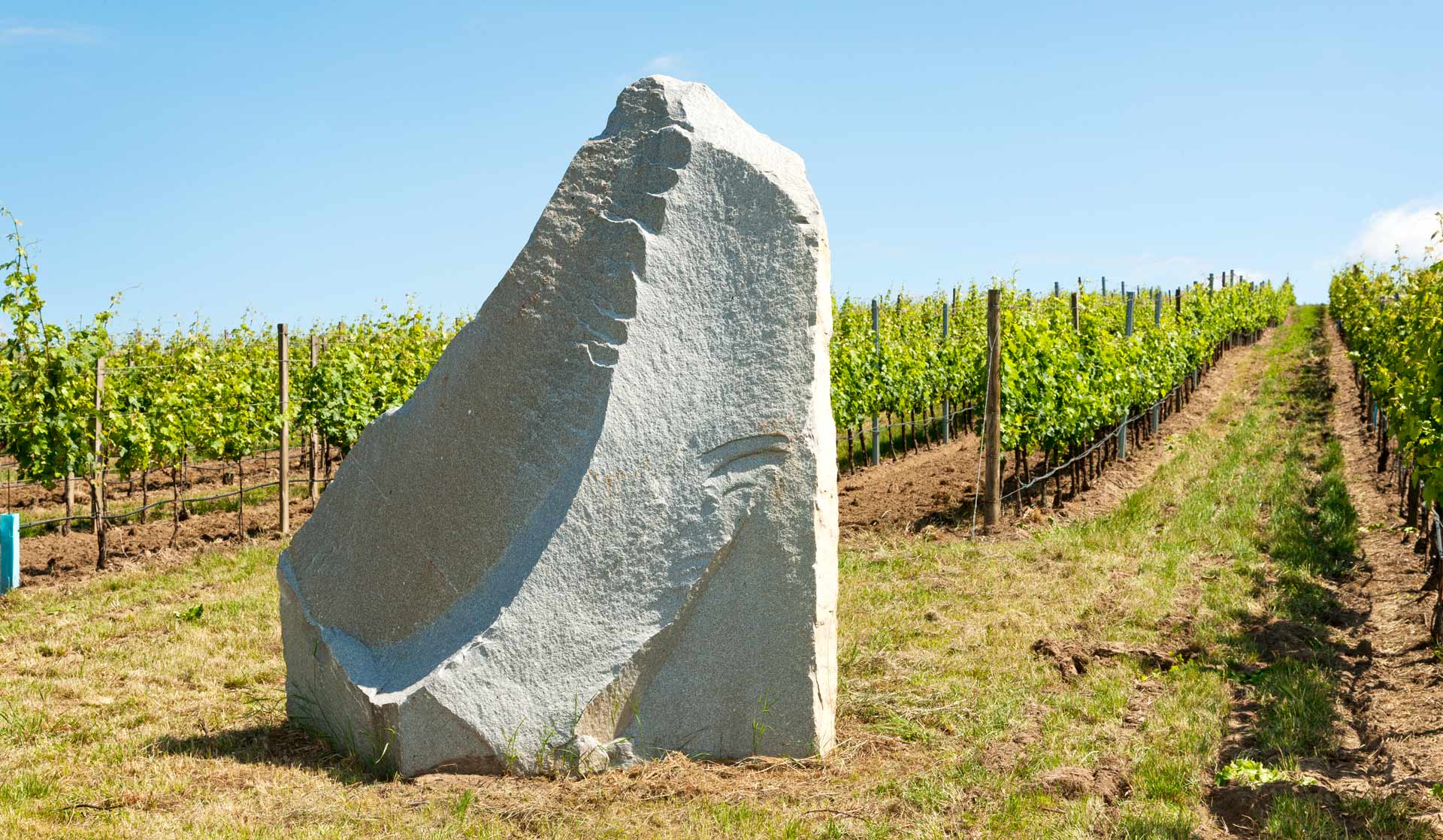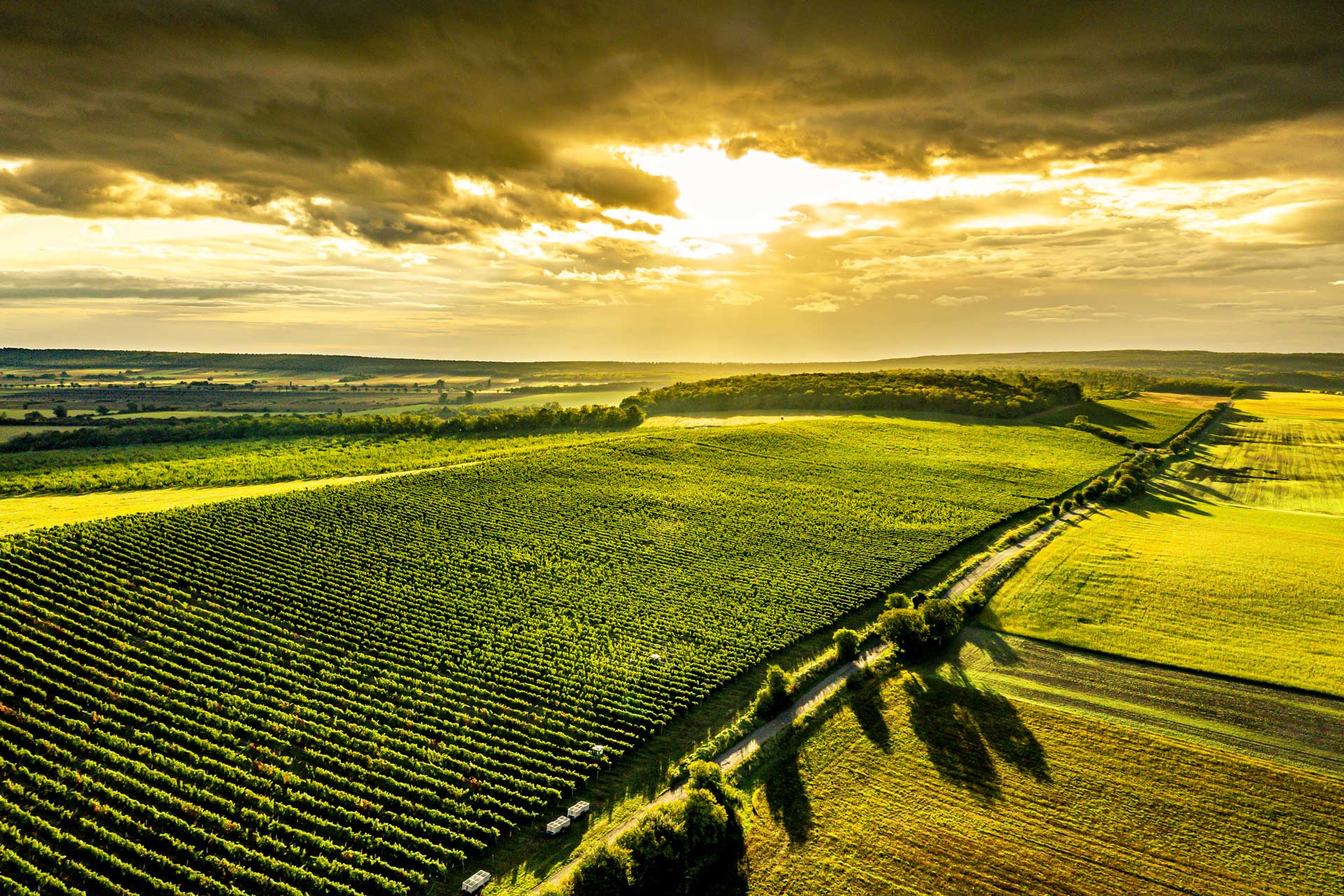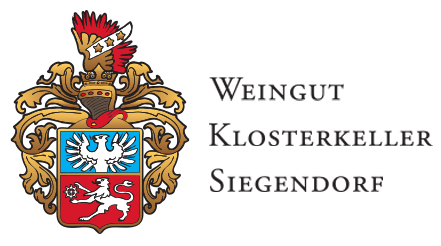 Scroll down
Scroll downTHE MARKET TOWN OF SIEGENDORF
History.
The Romans are said to have planted grapevines and harvested grapes here. However, the area’s origins extend back as far as the late Bronze Age.
The Romans are said to have planted grapevines and harvested grapes here. The market town of Siegendorf lies in the Leithaberg winegrowing region of Burgenland, some 60 kilometres south of Vienna on the Hungarian border.
The settlement was first documented in 1254, though its history can be traced back much further to at least Roman times. The discovery of 2,500-year-old grape seeds in Celtic burial mounds suggests its origins may even stretch back as far as the late Bronze Age.


FUNDAMENTALS
The terroir.
The Siegendorf terroir is created by the very mild Pannonian climate that prevails given the proximity to Lake Neusiedl, just four kilometres away. The sandy soils, rich in humus, ensure perfect winegrowing conditions.
PLANTING
Around 2,000 hours of sun every year.
Located south of the 47th line of latitude and east of the 16th line of longitude at 176 metres above sea level, Siegendorf is an excellent place to produce bold red wines and distinctive white wines. With around 2,000 hours of sun per year, average annual precipitation of around 600 mm and warm, sandy soils rich in humus, winegrowing conditions are ideal.

The vineyard.
The Klosterkeller Siegendorf winery has been managed by Weinkellerei Lenz Moser since 1988.
By 1990, the vineyard had been fully replanted with red wine vines of the Cabernet Sauvignon (11 hectares), Cabernet Franc (3 hectares) and Merlot (7 hectares) varieties. Having now reached the optimal age, these vines are producing red wines that pack a punch.
With red grapes making up approximately 87 % of its vines, the vineyard is a flagship operation in the production of local red wines. Weissburgunder (3 hectares) is the only white wine variety cultivated here. All grapes are picked by hand.

